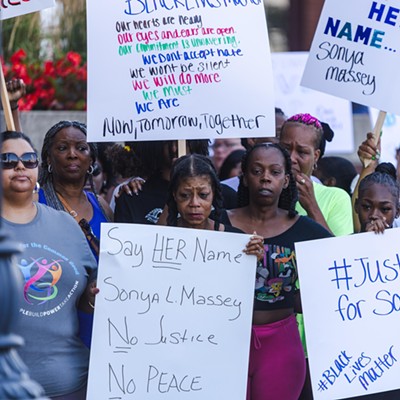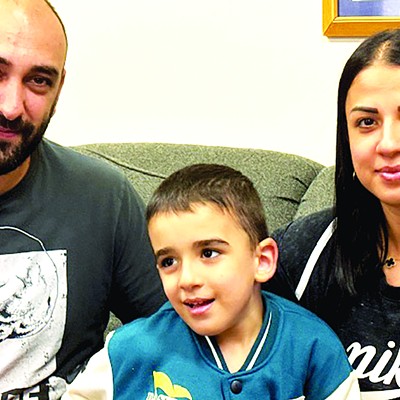Is AIDS a big deal in Sangamon County? Ask the Springfield AIDS Resource Center. Its volunteers and staff performed about 500 HIV tests last year and expect to do the same this year. In 2001, there were just 5 new reported cases of AIDS, but that was up from the previous two years. At least 64 people in Sangamon County are living with AIDS.
Judith Kren, director of the SARA Center, says there continues to be a problem of ignorance about HIV and AIDS. She tells the story of a Springfield man who died of AIDS within the past year. Shortly after his death, she received a call from the man's landlord, asking if he needed to follow special cleaning procedures to keep from contracting the disease.
Though diagnoses of AIDS have dropped nationwide since the mid-1990s, new populations are at risk, says the SARA Center's Kila Alexander, who teaches people about the dangers of intravenous drug use. About half of all those infected--still in the tens of thousands annually in the U.S.--are African American males, according to the Centers for Disease Control. Particularly at risk, Alexander says, is the "down-low brother," or an African American who is married or has a girlfriend but also secretly has sex with other men. Teenagers between the ages of 14 and 18 are also at greater risk than ever before, and account for slightly less than 40 percent of all new infections. Kren says risky sexual behavior is mostly to blame for the rise of HIV and AIDS in this group.
"It's just sex--they're not afraid anymore," says Kren. Partly to blame for this lack of fear is the effectiveness of AIDS-fighting drugs, known as protease inhibitors, which can keep someone with the AIDS virus healthy for decades.
"But HIV is the least of our worries," Kren says. The SARA Center offers housing for those with HIV and AIDS, and these residents tend to be dealing with a lot of other problems, including drug addiction, mental illness, family strife, and financial troubles. While drugs are effective, they can cost $10,000 to $15,000 a year, she says. Many people make too much money to qualify for government assistance but too little to afford the drugs, even with health insurance. One woman who came to the SARA Center for help dropped her health care coverage to qualify for government assistance with AIDS medications. "But now what if she gets sick with something else?" ask Marcia Brooks, a caseworker at the center.
"You'll find that nationwide people have become complacent," says Lucy Breitung, director of Positive Options, Referrals & Alternatives, a resource for recovering prostitutes in Springfield. "Medication prolongs life. People are not as cautious. They feel they are pretty safe. AIDS is still out there. It's still a death sentence."
PORA also runs HIV prevention programs, even sending volunteers into bars at night and on the weekends to educate the public about the disease and hand out condoms.
The SARA Center and PORA are two of many groups to have benefited from the AIDS Walk Springfield, an annual fund-raiser held since 1994. It has raised more than $100,000 for local organizations waging the "war against AIDS." This year, the AIDS walk takes place on Sunday, May 4, at 3 p.m. The walk starts downtown on Washington Street across from the Old State Capitol. Entertainment will be provided and includes Mother's Worry, Libby King, Eleni Moraites, and the Urban League's Kuumba Dancers.
For more information, call 793-9047 or visit http://aidswalkspfld.tripod.com.















